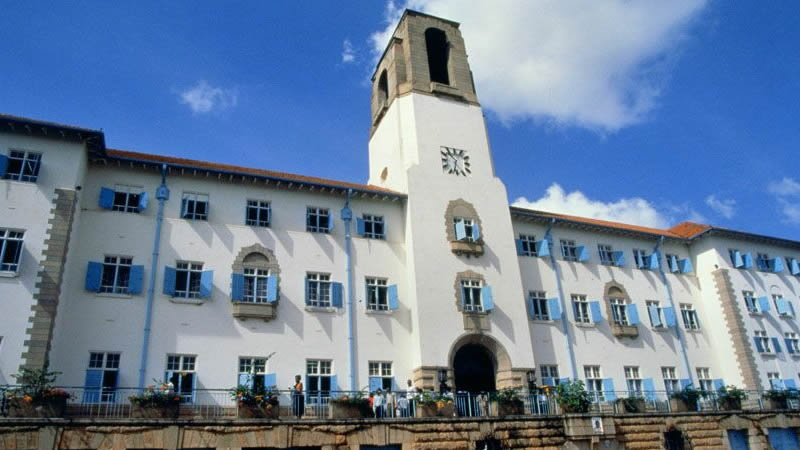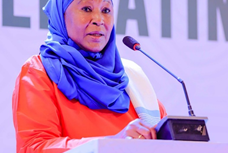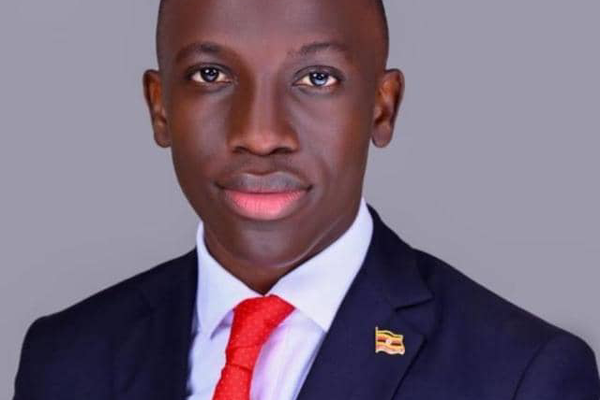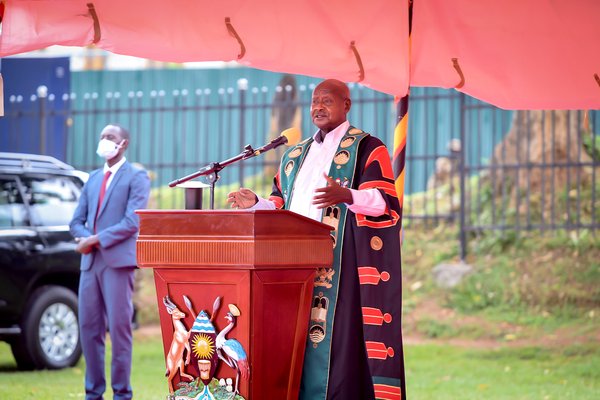By Ritah Kalendera
One-hundred-and-one-year-old Makerere University boasts of a number of historical buildings at its main campus that include the Ivory Tower and the different halls of residence among others. Famed for her groundbreaking research in different fields of science and the humanities, one could argue, however, that it is the Main Library that has made Makerere a research center over the years.
The library boasts of a collection of over 600,000 monographs, while its print book count grows by about 2,500 annually, according to information obtained from their website. The collection also includes over 12,000 titles of bound serials/ periodicals and an annual subscription of about 200 titles of print serials/ periodicals as well as over 27,000 titles of electronic journals.
According to the University Librarian, Prof. Ruth Nalumaga, the Makerere Main Library is believed to be the oldest and biggest in East Africa. It was also the first legal depository in Uganda, which means that it is supposed to keep copies of all works published in Uganda.
“In 1958, there was a law called the Makerere University (Deposit Library) Act which stated that everyone who published a book in Uganda was supposed to deposit a copy at the library and this still applies,” explains Nalumaga. Being the oldest depository in Uganda, the main library has collected material from as early as the 1890s and therefore stands out as one with the biggest collection in Uganda, adds Nalumaga.
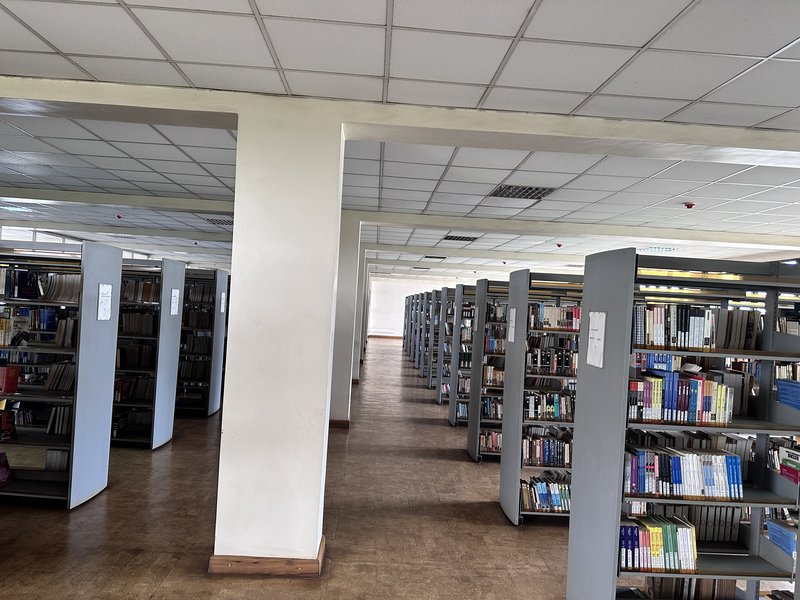
The International Development Association Section of the Makerere University Library
The collections include archives from the British who collected materials from all their colonies and deposited them with the Makerere University Library, as well as records from different East African countries and early court records. The Main Library is also a depository for the United Nations and its related bodies. Nalumaga thinks this is because “the UN, being a peace regulatory body, thought of this library as a safe place to store their information.”
There are two other legal depositories in Uganda. The Uganda Management Institute is meant to be a depository for all government publications, as well as the National Library of Uganda.
It is easy to see why the Makerere Main library is such a research treasure not only for Makerere, but for Uganda at large.
The library is divided into a number of sections, each serving a specific purpose. One of them is the Africana section. This section is responsible for housing documents or material from Africa, East Africa and Uganda. As a legal deposit center, it is mandated to receive and store copies of publications from every Ugandan or non-Ugandan who writes a book about Uganda. It is also the depository of the United Nations’ publications and related bodies
The other section is the book bank. It is responsible for purchasing books for the university. The book bank system started in 1990 and comprises basic prescribed text books which are kept and accessed from the academic departments. Currently, the book bank collection has over 250,000 copies of books.
The digitization section is in charge of digital conversion and managing the institutional repository. The law section contains all law related reports and textbooks while the technical services section processes newly acquired books and enters them into the online catalogue for easy access. Other sections include the ICT section and the IDA (International Development Association) section.
The Main Library goes beyond managing books and periodicals and is involved in a number of projects such as the land archives project which was sponsored by the Makerere Research and Innovation Fund (MakRIF). The project is responsible for collecting the original land documents from the public, and helping to trace changes in land ownership, with the hope of solving the land dispute problem in Uganda.
The other project is the documentation of monuments around the university, some of which are quite abstract, like that at the roundabout at the intersection of University Road and New Avenue in the form of a bird hatching eggs. Appropriately named "Hatching a New Generation", the monument was erected during Makerere University's 75th anniversary. There is also a bust of Prof. Senteza Kajubi, a two-time Vice Chancellor of Makerere University and a key figure in Uganda's education sector. There is also a portrait in the archives of Prof. Senteza Kajubi, one of the first vice chancellors of Makerere University and a key figure in Uganda’s education sector. With this project, the library documents these pieces of art and describes them in written form for the public to know what they represent.
Another project deals with commemorating Makerere University through photos as represented on the library wall of fame. These include those of important figures like Owek. Martin Luther Nsibirwa, the Katikkiro of Buganda who on 4th September, 1945 signed Clause 15 of the 1900 Buganda Land Agreement to enable the acquisition of land by the Government to expand Makerere resulting in his murder the next day. Mrs. Mary Stuart, after whom the female hall of residence, Mary Stuart, was named, is also on the wall of fame. Other pictures are those of the first dean, physician, vice chancellor and several other notable people.
The newspaper collection is also a project the library has put in place to scan old newspapers and create a database for easy access. Nalumaga explains that this is because most of these newspapers are very old and constant use wears them out so a digital copy is relevant. These papers are also conserved by the bindery unit to keep them for long.
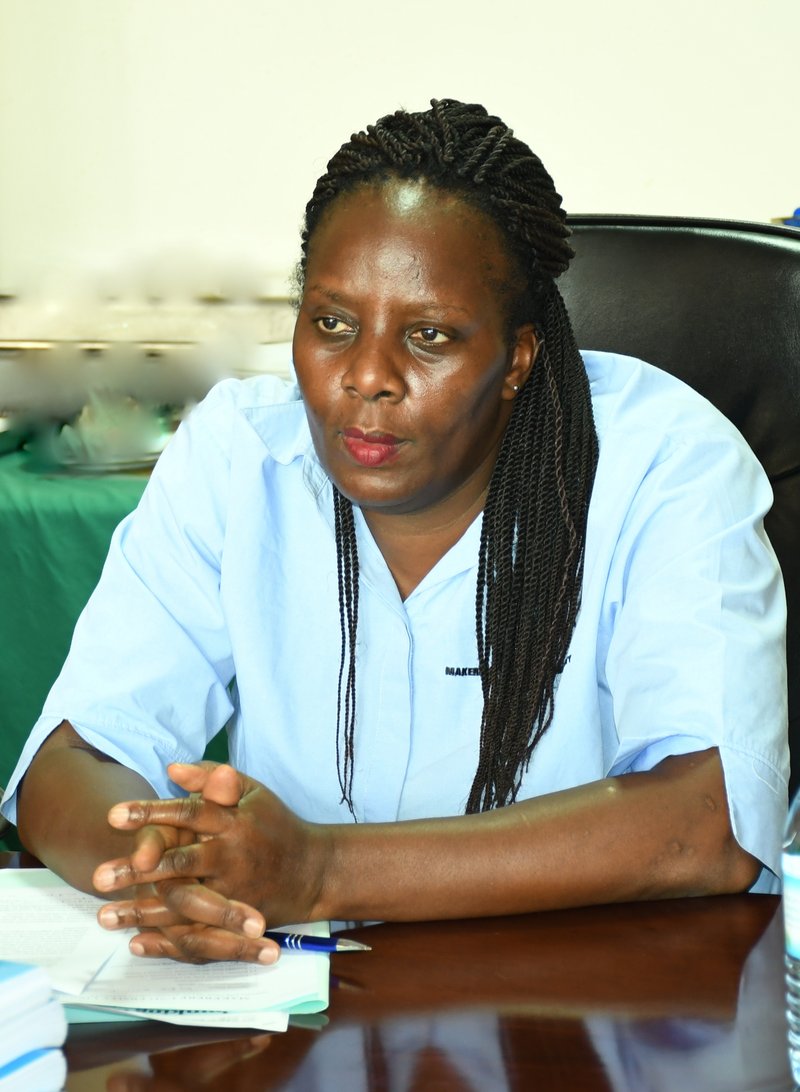
Prof Ruth Nalumaga the Main Librarian in her office at the Makerere University library
The Makerere University Library serves students, the academic staff as well as, the external users who can access information through the online sources. As such, one doesn’t have to walk to the library; they can register online by downloading an application form from the library website. Once registered, users have access to any kind of information provided it’s in the library. This helps students and other users to login remotely.
In conformity with Makerere University’s pioneering spirit, the library has put in place provisions for users with disabilities. “This includes the computer lab that is exclusive to users with visual impairment, located on the ground floor,” explains Nalumaga. The computers in this lab have facilities like magnifiers which increase the size of the letters and enlarge the texts for users with lower vision. There is also a braille printer that prints tangible material that the blind use, making it easy for them to get information from the library.
However, just like any other institution, the library faces some challenges. One of the major challenges is inadequate funding, which affects their projects and innovations. The other challenge is the long working hours by the staff during examination periods since students tend to flock to the library, overwhelming the few staff attending to them.
Nonetheless, it is clear that the Makerere University Library is not only grand in area, but also in the volume of its collections and the services it offers to the university community and the public. It is easy to see why it is part and parcel of research at the university.
Related News
![]() Please join hands with the Makerere University Endowment Fund as it works towards attracting & retaining the best faculty, providing scholarships, and investing in cutting-edge research and technology.
Please join hands with the Makerere University Endowment Fund as it works towards attracting & retaining the best faculty, providing scholarships, and investing in cutting-edge research and technology.
